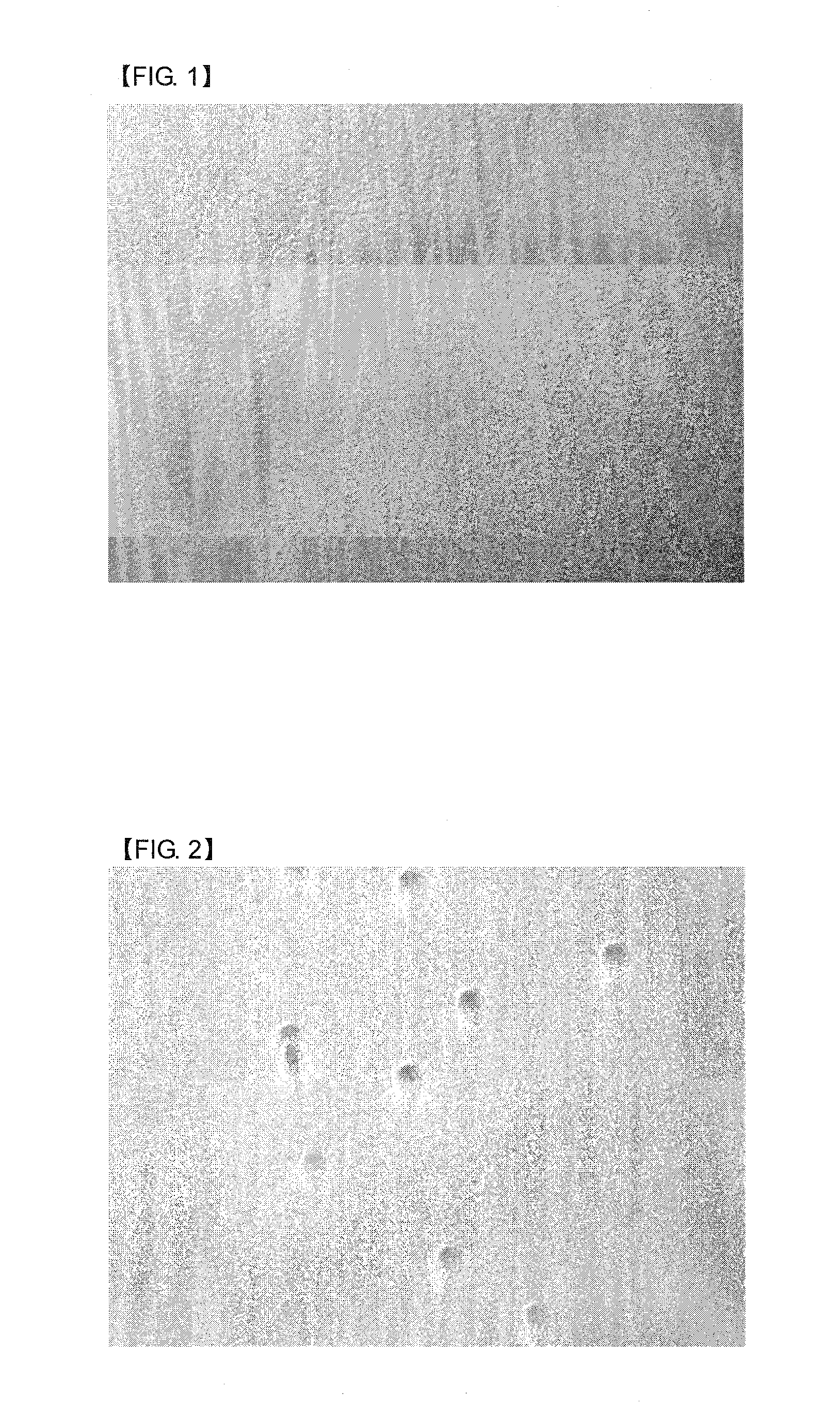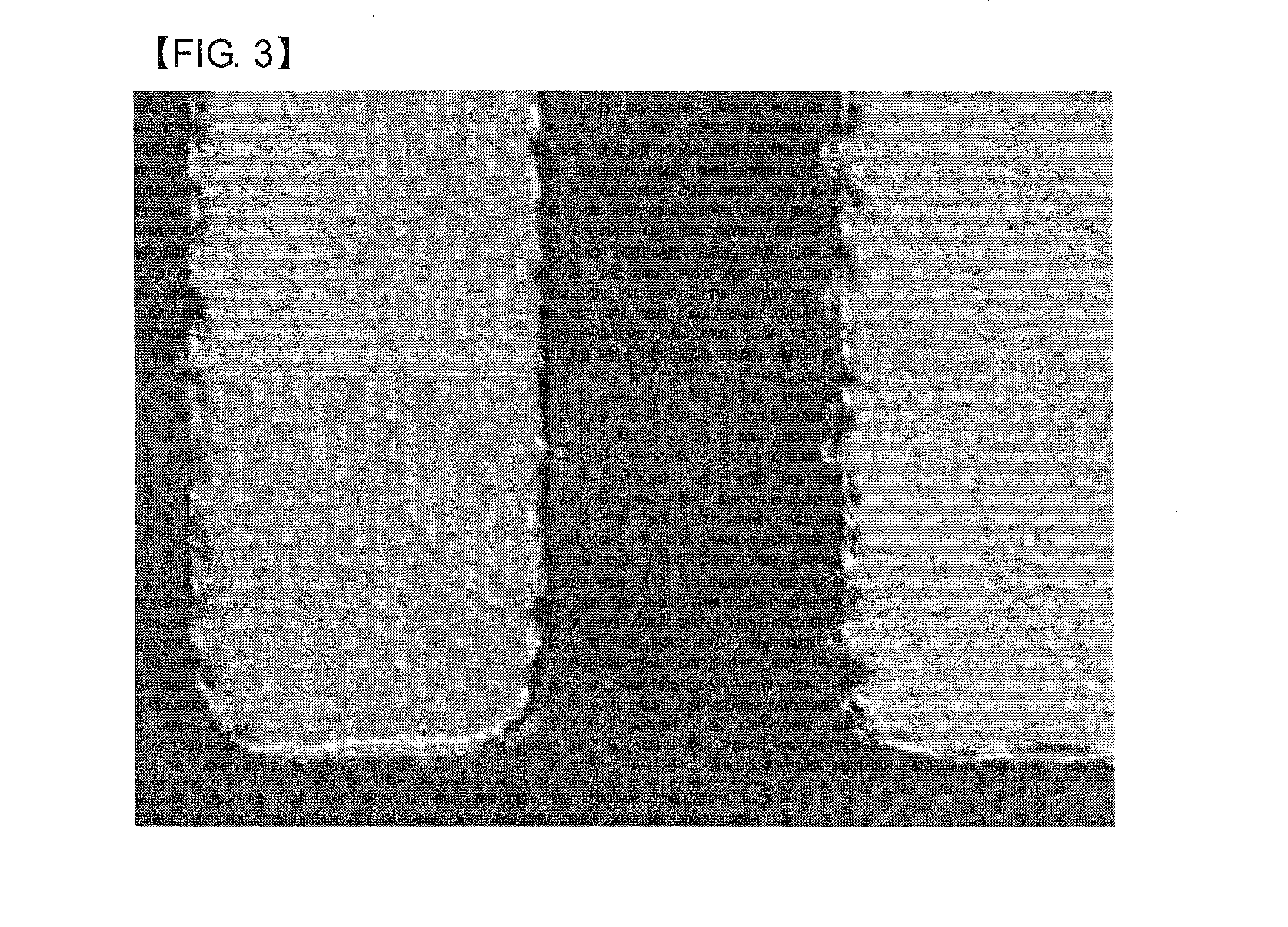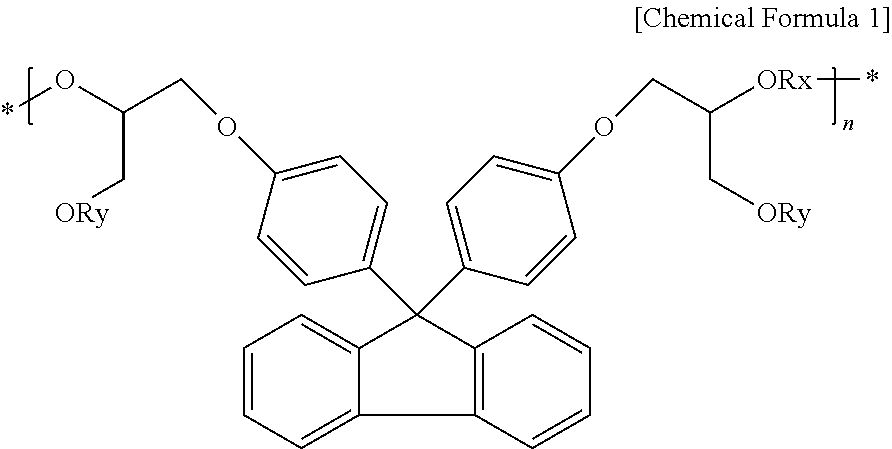Photosensitive resin composition for black matrix
a technology of black matrix and resin composition, which is applied in the direction of photosensitive materials, photomechanical equipment, instruments, etc., can solve the problems of high process cost, environmental pollution, and high reflectivity, and achieve excellent process characteristics, no surface defects, and less defects
- Summary
- Abstract
- Description
- Claims
- Application Information
AI Technical Summary
Benefits of technology
Problems solved by technology
Method used
Image
Examples
exemplary embodiment 1
950 weight % of a carbon dispersion liquid (including 20 weight % of a carbon content), 50 weight % of an alkali soluble binder resin having a weight average molecular weight 5000 and an acid value 80 KOHmg / g in which bisphenol fluorene epoxy acrylate / 1,3-cyclohexyldiisocyanate to which acrylic acid was added was formed in a mole ratio of 65 / 35, 30 weight % of dipentaerythritolhexaacrylate as a functional monomer, 25 weight % of ethanone-1-(9-ethyl)-6-(2-methylbenzoyl-3-one)-1-(o-acetyloxime) as a photopolymerization initiator, 5 weight % of 3-methacryloxypropyltrimethoxysilane, which is an adhesion promoter, 1 weight % of a labeling agent, 400 weight % (24.3 weight %) of propyleneglycol methylether acetate (146° C.) as a solvent, 850 weight % (51.6 weight %) of 3-methoxy butylacetate (170° C.), 245 weight % (15 weight %) of dipropyleneglycol methylether (188° C.), and 150 weight % (9.1 weight %) of diethyleneglycolbutylmethylether (212° C.) were mixed. Thereafter, by stirring the m...
exemplary embodiment 2
950 weight % of a carbon dispersion liquid (including 20 weight % of a carbon content), 50 weight % of an alkali soluble binder resin having an Mw 5000 and an acid value 80 KOHmg / g in which bisphenol fluorene epoxy acrylate / 1,3-cyclohexyldiisocyanate to which acrylic acid is added is formed in a mole ratio of 65 / 35, weight % of dipentaerythritolhexaacrylate as a functional monomer, 25 weight % of ethanone-1-(9-ethyl)-6-(2-methylbenzoyl-3-one)-1-(o-acetyloxime) as a photopolymerization initiator, 5 weight % of 3-methacryloxypropyltrimethoxysilane, which is an adhesion promoter, 1 weight % of a labeling agent, 400 weight % (24.3 weight %) of propyleneglycol methylether acetate (146° C.) as a solvent, 850 weight % (51.6 weight %) of 3-methoxybutylacetate (170° C.), 245 weight % (15 weight %) of dipropyleneglycol methylether(188° C.), and 150 weight % (9.1 weight %) of diethyleneglycolethylether acetate (217° C.) were mixed.
Thereafter, by stirring the mixture during five hours, a black ...
exemplary embodiment 3
950 weight % of a carbon dispersion liquid (including 20 weight % of a carbon content), 50 weight % of an alkali soluble binder resin having an Mw 5000 and an acid value 80 KOHmg / g in which bisphenol fluorene epoxy acrylate / 1,3-cyclohexyldiisocyanate to which acrylic acid is added is formed in a mole ratio of 65 / 35, weight % of dipentaerythritolhexaacrylate as a functional monomer, 25 weight % of ethanone-1-(9-ethyl)-6-(2-methylbenzoyl-3-one)-1-(o-acetyloxime) as a photopolymerization initiator, 5 weight % of 3-methacryloxypropyltrimethoxysilane, which is an adhesion promoter, 1 weight % of a labeling agent, 90 weight % (5.5 weight %) of propylene glycol methylether (121° C.) as a solvent, 1100 weight % (66.8 weight %) of 3-methoxybutylacetate (170° C.), 245 weight % (15 weight %) of dipropyleneglycol methylether(188° C.), and 210 weight % (12.8 weight %) of diethyleneglycolmonoethylether (202° C.) were mixed. Thereafter, by stirring the mixture during five hours, a black matrix pho...
PUM
 Login to View More
Login to View More Abstract
Description
Claims
Application Information
 Login to View More
Login to View More - R&D
- Intellectual Property
- Life Sciences
- Materials
- Tech Scout
- Unparalleled Data Quality
- Higher Quality Content
- 60% Fewer Hallucinations
Browse by: Latest US Patents, China's latest patents, Technical Efficacy Thesaurus, Application Domain, Technology Topic, Popular Technical Reports.
© 2025 PatSnap. All rights reserved.Legal|Privacy policy|Modern Slavery Act Transparency Statement|Sitemap|About US| Contact US: help@patsnap.com



